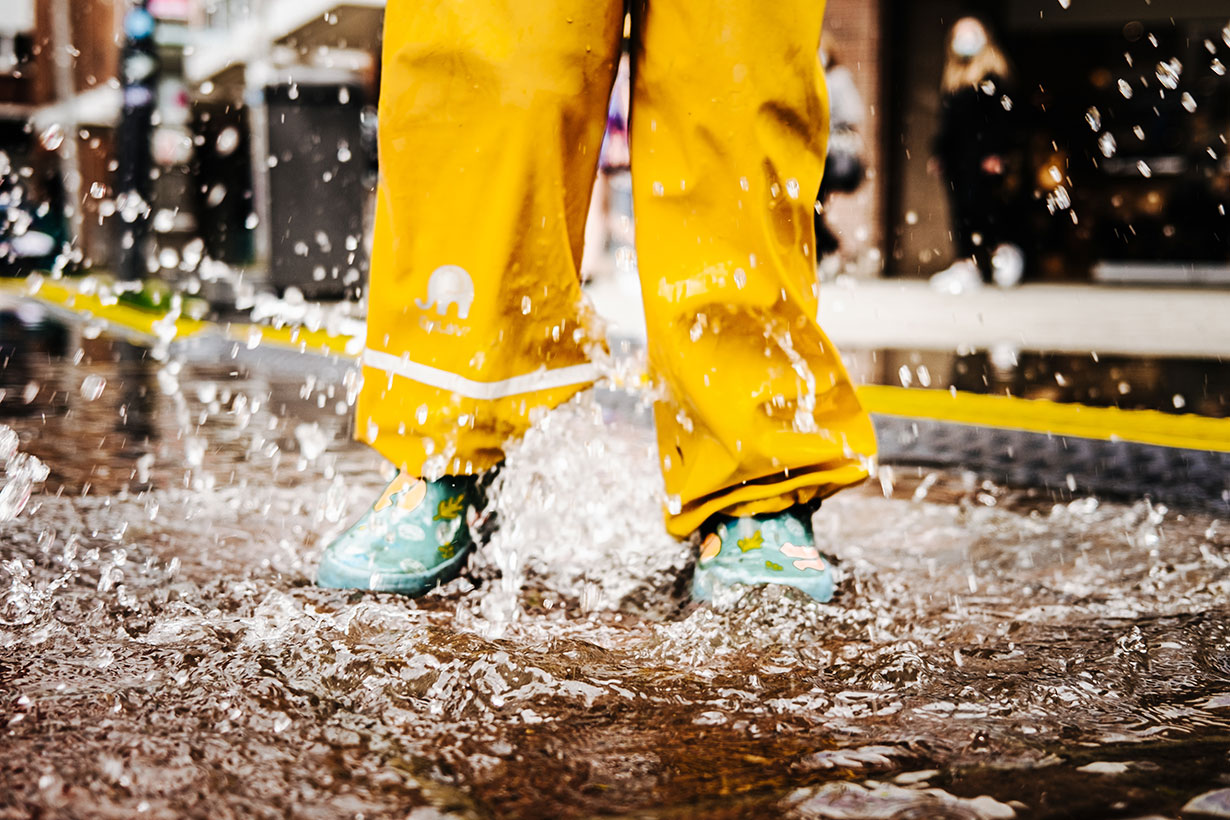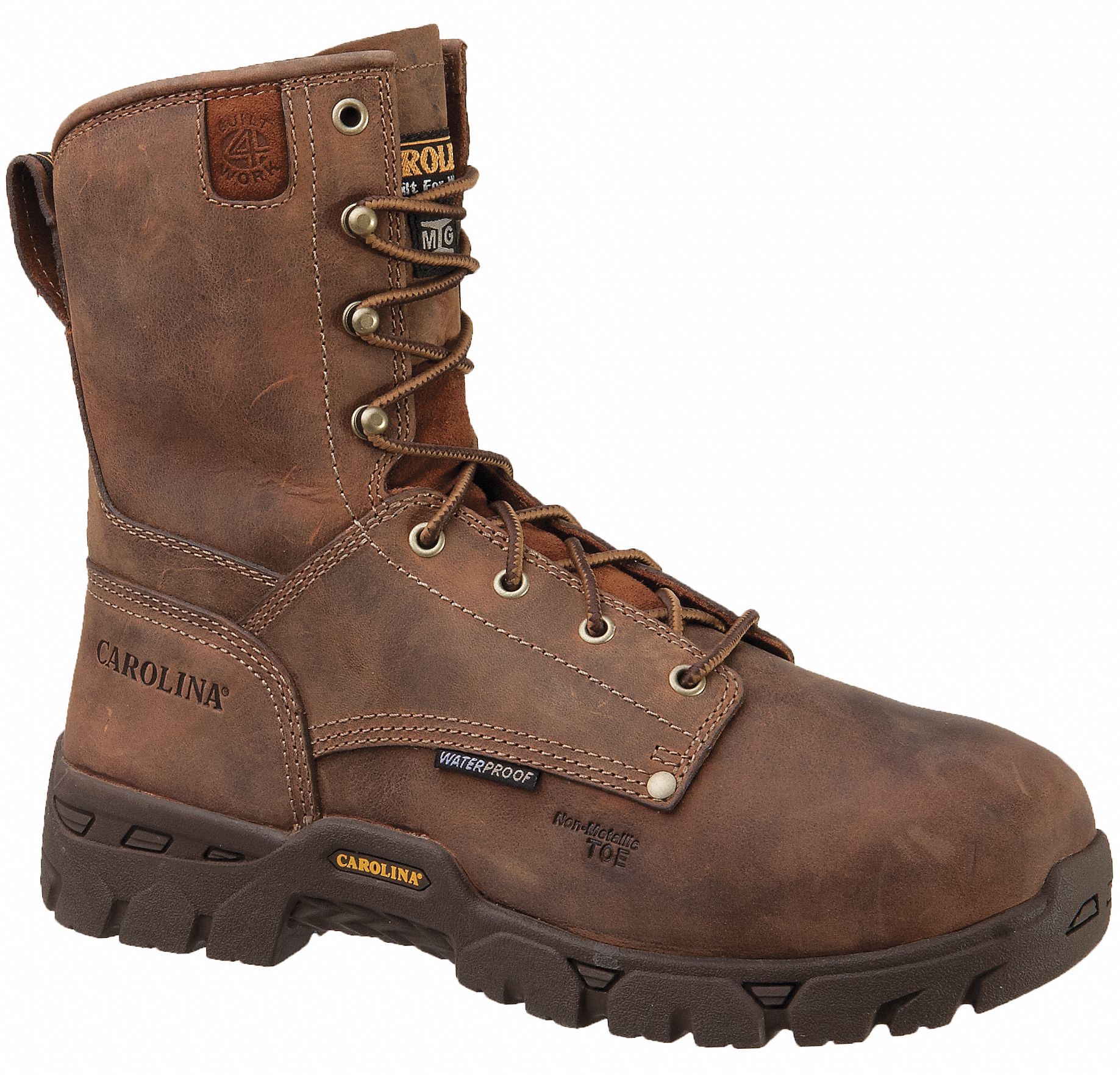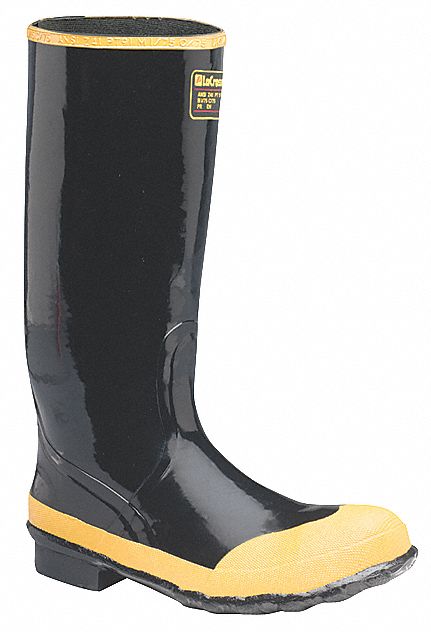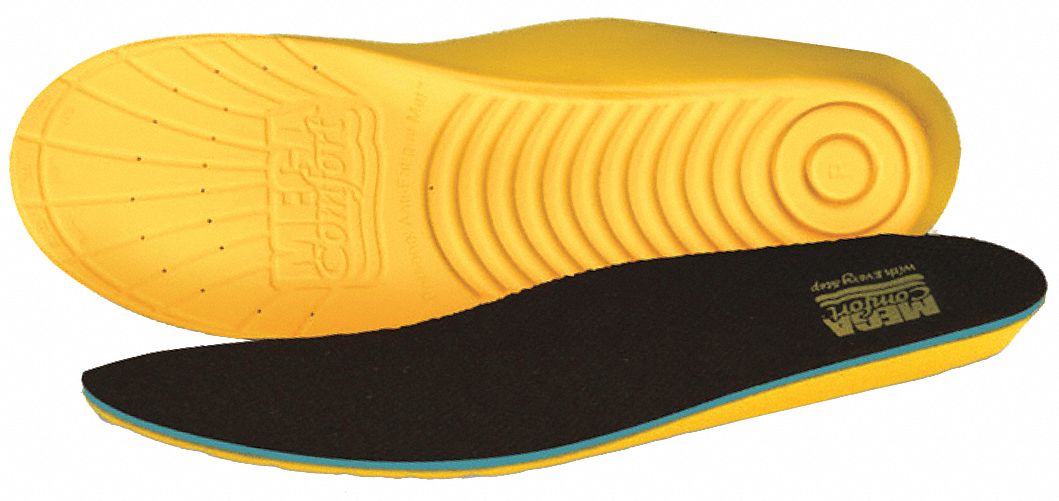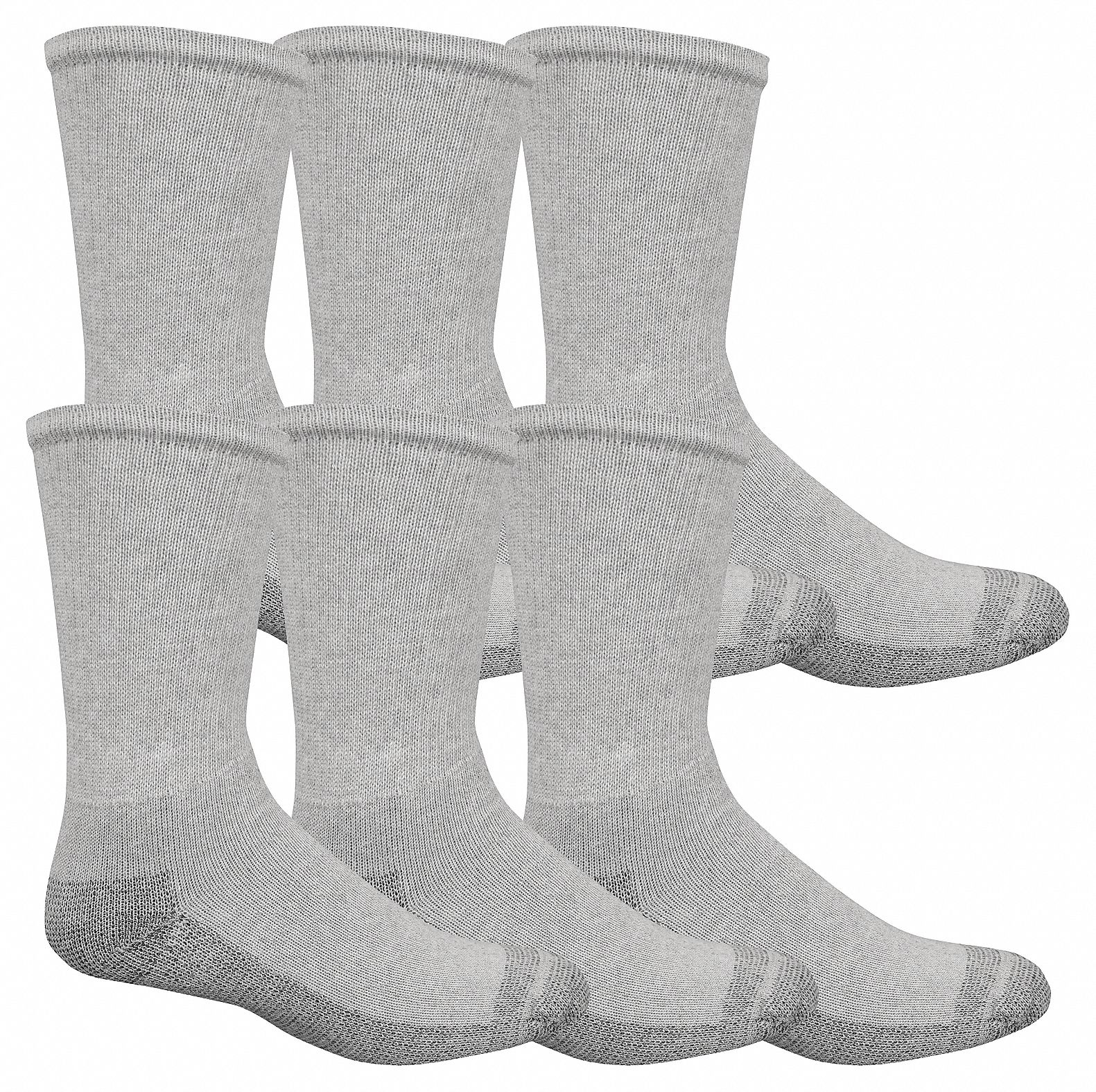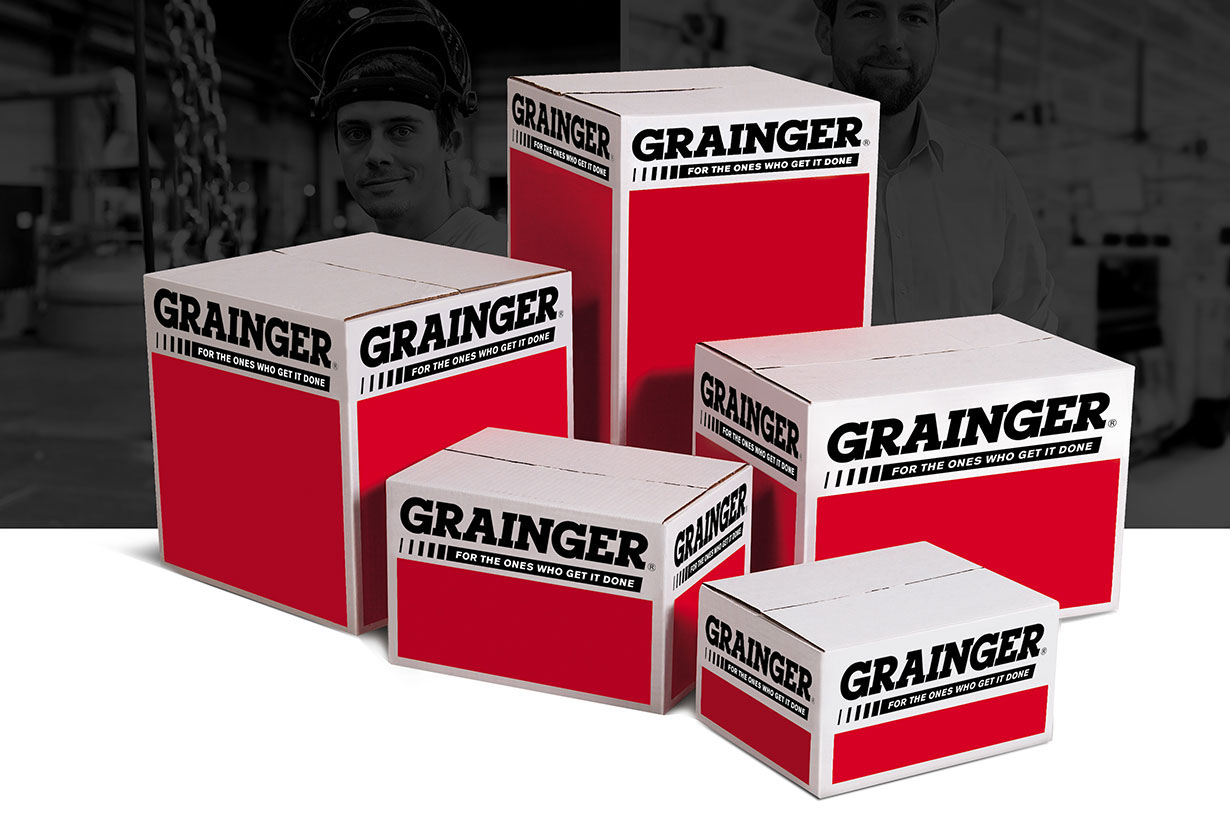

A Shoe for Every Work Occasion: Work Footwear You Need
By Grainger Editorial Staff 8/1/25
From steel-toe boots to slip-resistant shoes, learn how to choose the right work footwear to protect against hazards like falling objects, sharp materials, cold, moisture and more. Discover how the right pair can reduce fatigue, improve stability, and keep you comfortable through long shifts.
You depend on your feet a lot. Making sure that you take care of them is a high priority for any worker. This means choosing the right kind of work footwear for your occupation. Because, while a standard set of earplugs or safety glasses may cover a wide range of occupations and possible hazards, the right safety shoes may require a lot more consideration to make sure you get the right one.
Workplace foot hazards exist in many different forms. The best way to protect employees is to control these hazards at the source using engineering, work practice and administrative controls. When these controls are not feasible or do not provide sufficient protection, proper footwear personal protective equipment (PPE) must be used.
How to Choose Your Shoes
Footwear must be chosen based on the hazards at your site. For example, if you work in a place where you may be at risk of falling objects, choosing a boot based on ankle support isn’t addressing the appropriate risk. Steel-toe work boots are a great and traditional protection for several hazards on many different work sites, but are they the right choice for you? Taking the extra time to make sure you know just what you need could make a world of difference.
ASTM F2413, Standard Specification for Performance Requirements for Protective (Safety) Toe Cap Footwear, covers minimum requirements for the design, performance, testing and classification of protective footwear. Footwear certified as meeting ASTM F2413 must first meet the requirements for impact and compression resistance. Additional sections cover protections such as metatarsal, conductive, electrical hazard, static dissipative and puncture resistance. Footwear may also be tested to ASTM F3445, which sets requirements for slip resistance in occupational footwear. While not required by OSHA, this standard can help identify footwear designed to reduce slips, trips and falls.
Here are some of the most frequent potential hazards that require foot PPE. Take a look and see which shoes are made with those hazards in mind. You can also use our safety shoe selection guide to help identify shoes for your work needs.
Electrical Hazards
Electrical hazard boots are an essential piece of PPE for anyone working around electricity. This could be an electrical worker or someone who works around circuits or high voltage machinery. This footwear is manufactured with non-conductive, electrical shock-resistant soles and heels. These shoes help prevent the worker from completing an electrical circuit, reducing the risk of electric shock.
Explosives
If you work around explosives or other highly reactive or flammable substances, you will likely need electrically conductive shoes. Electrically conductive work footwear helps prevent the buildup of static electricity on the worker. Without this precaution, static buildup on your body could easily generate a spark that could cause a fire or explosion. Silk, wool and nylon socks should not be worn in this type of work environment or with this type of shoe, as those materials are more likely to produce static as well.
Chainsaws
Working with chainsaws or other rotating blades makes protective footwear absolutely necessary. Cut-resistant chainsaw boots (and other cut-resistant clothing) can prevent serious injuries in the face of an accident involving a chainsaw. These are made from specific materials that create a protective barrier from spinning blades.
Falling Objects
If you are at risk of falling items, you will surely want safety toe boots. These are boots that have a capping over the toe area for protection. These toe cappings were traditionally made of steel, hence steel-toed boots. However, now they are also available in composite materials.
Sharp Objects
Sharp objects on the floor pose a workplace hazard. Sharp objects, like nails or screws, can puncture through the soles of regular shoes and injure your foot. Puncture-resistant footwear includes a steel or composite plate positioned within the midsole to protect from the dangers of stepping on sharp and jagged objects.
Rolling Objects or Machines
Some work footwear has additional protection along the metatarsal region (the top of your foot). If you have ever dropped anything on the top of your foot, you know how much it can hurt. Metatarsal boots are good for work environments where rolling objects or machines present a risk. Any job that involves heavy machinery, heavy loads, or dangerous conditions can require the use of metatarsal boots.
Cold
Working in cold conditions means dressing to keep warm, and your shoes are no exception to this. Insulated work boots are designed with materials rated to specific temperature ranges, helping protect against frostbite and other cold-related risks.
Moisture
Water-resistant leather boots are a popular choice when working in wet conditions where moisture is an issue. Working outdoors often means exposure to the elements, which increases the risk of getting wet. Keeping your feet dry helps protect them against the cold. Water-resistant footwear protects against mold, rot and fungus growth.
Slippery Surfaces
Slip-resistant shoes are required for a large variety of industries. Healthcare workers, kitchen workers, wait staff, industrial workers, factory workers—the list is almost endless.Slip-resistant shoes come with a sole that reduces the slickness that can cause a fall or accident.
Molten Metals
Working with molten metals presents huge risks. Foundry shoes are made specifically for these types of occupations. These are designed to insulate against the extreme heat of this kind of environment. They prevent hot metals from getting lodged into the shoe’s eyelets. They also frequently come with an easy slip-off design in case of burn caused by a molten metal splash.
A Few More Things about Work Footwear
Of course, there are a few more factors to consider when buying the right work footwear. You should make sure you feel supported in your arch and ankle, and that you can stand and move in them comfortably. You will also want to be sure they fit well; a loose-fitting shoe can be a work hazard itself. Always make sure the footwear you choose matches the guidelines set by your company, and for the type of work you do. Protect your feet well—they’re all you’ve got to stand on!
Sources:
https://www.osha.gov/Publications/osha3151.pdf
https://www.grainger.com/content/qt-protective-footwear-standards-252
http://foundrymag.com/feature/cautionary-tale
![]()

Safety Management
6 Tips to Help Prevent Slips, Trips and Falls
Identify the fall hazards in your workplace and implement a fall safety program. Check out these tips from Grainger so you can mitigate risk.
![]() Our Latest KnowHow
Our Latest KnowHow
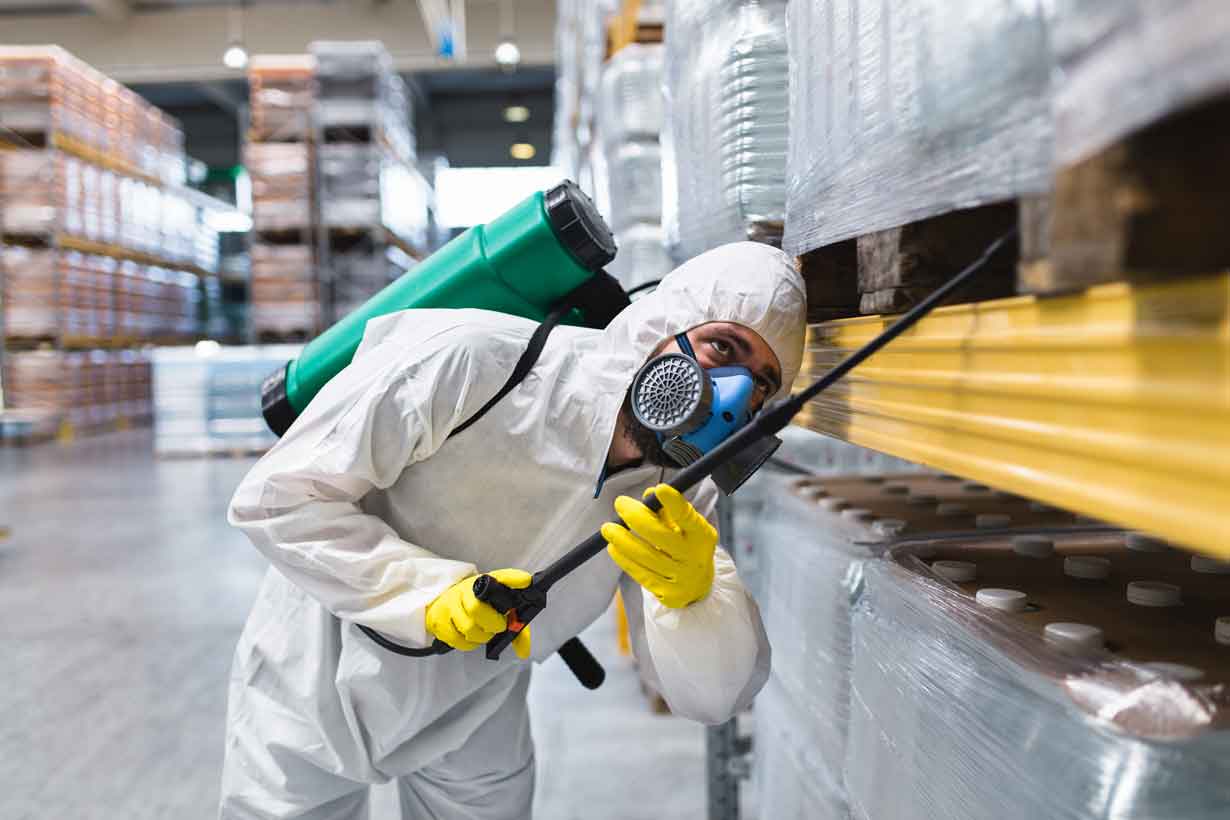
Facility Pest Control: How IPM Helps Safely Manage Insects
Discover safe, compliant pest control with IPM. Find tips for insect monitoring, sanitation and safe insecticide use in commercial facilities.
The information contained in this article is intended for general information purposes only and is based on information available as of the initial date of publication. No representation is made that the information or references are complete or remain current. This article is not a substitute for review of current applicable government regulations, industry standards, or other standards specific to your business and/or activities and should not be construed as legal advice or opinion. Readers with specific questions should refer to the applicable standards or consult with an attorney.


